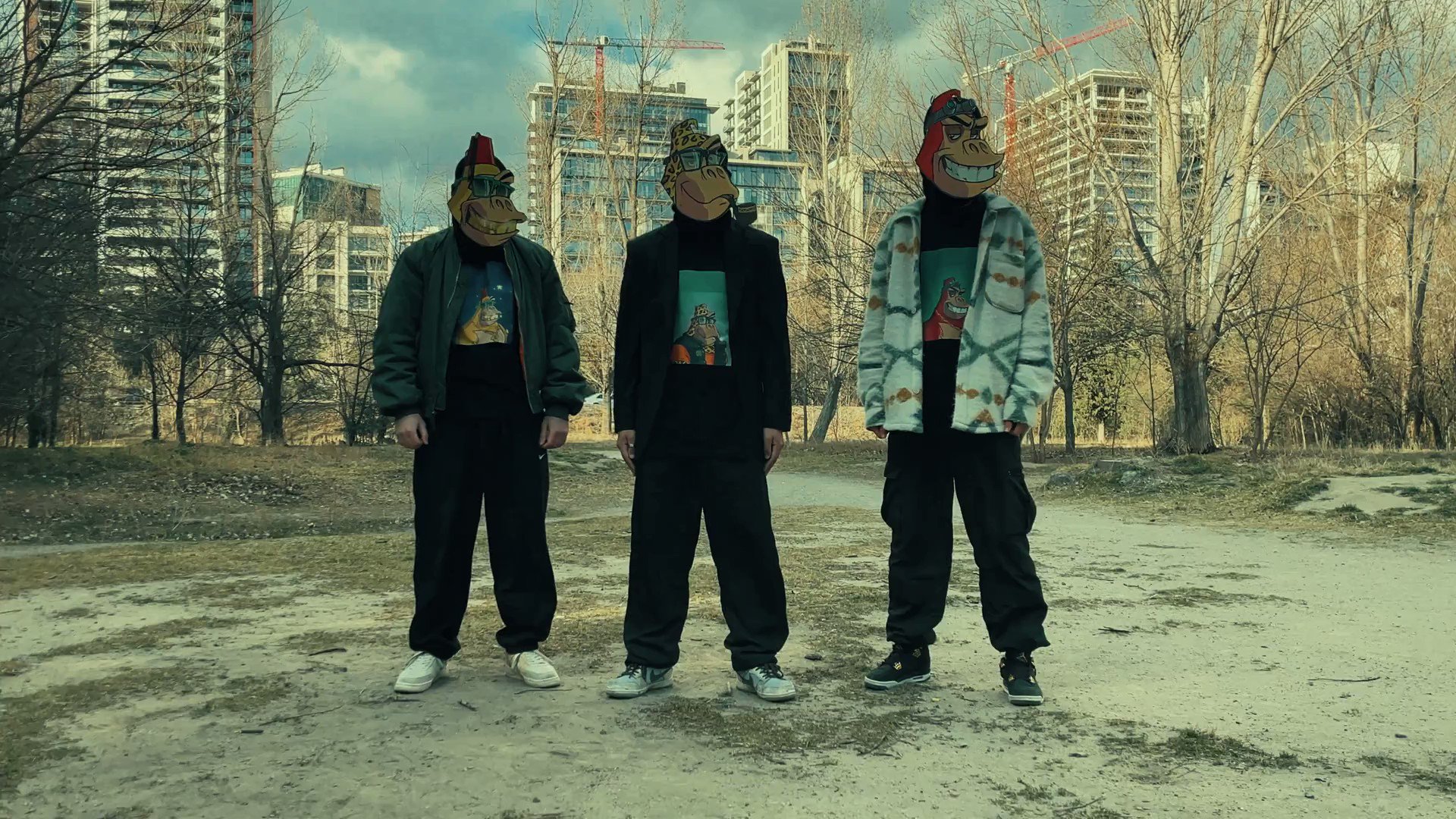
As of this week, The Lucky Ape Travel Club has officially started minting its first 10,000 NFTs. If that sentence sounds like gibberish to you, you’re probably not alone. Today we’re taking a dive into the murky world of NFT travel.
Hold onto your passports, because NFTs and travel have officially collided. And it’s complicated. This week, the Lucky Ape Travel Club (an exclusive, members-only NFT club) started minting its first run of 10,000 travel NFTs.
NFT stands for Non-Fungible Token. Fungible means easily replaced or mutually interchangeable. So NFTs, by extension, are one-of-a-kind, online things. It’s probably helpful to think of them as digital assets. Once you buy one, it’s yours to use or swap or sell, or do whatever you want with. An NFT can be almost anything: the Web’s original source code, a video of someone burning a Banksy, pixelated human heads that are worth $16.9 million.
What Lucky Ape Travel Club (LATC) and several other canny companies have done is turn NFTs into not just collectible trinkets, but digital keys. Think of an NFT as a golden ticket to an exclusive world of member perks. In this case, travel.
RELATED: The historic Trans Bhutan Trail is re-opening after 60 years
“New age technologies have already connected the world in a way that was inconceivable just a few decades before,” says Jeff Bordes, LATC CEO and founder. “We enable our members to enjoy this reality while building another.”
So what does that really mean? Basically, Lucky Ape Travel Club has created 10,000 limited-edition, one-of-a-kind NFTs to sell. Each NFT is a programmatically generated picture of a cartoon ape. There are nine attributes and 217 possible ape “traits,” including expression, headwear and accessories. The algorithm jumbles these up and spits out a programmatically generated ape, and you can buy whichever takes your fancy. There are apes in top hats, grinning apes, apes in sunglasses, apes with gold teeth. Each costs one Ethereum coin (current value: around $3,000USD).
These apes live securely on the Ethereum blockchain—a decentralized digital ledger—which basically means your ape can’t be stolen or hacked. When you buy your ape, it’s not only yours to keep, but it gives you free access to Lucky Ape’s physical properties, fancy yachts and exclusive parties all over the world. And this is where travel comes in.
“The Metaverse and its supporting tokenomics are promising to really raise the bar of our links to reality, and one another.”
Jeff Bordes, Lucky Ape Travel Club CEO
So far, LATC has secured partnerships with boutique hotels in Bali, Capetown, Buenos Aires, Rio De Janeiro, Miami, Sosua and Tulum. As an ape owner, you get free lodging in all of them, plus access to LATC’s exclusive virtual Metaverse. “Think yacht parties in Croatia, secluded estates, and remote locations around the world,” the LATC website promises, “plus our Metaverse land in Sandbox.”
It might sound ridiculous, but if you look at the current trend for NFTs, it could be a smart move all around. We’ve already seen NFT collections like this (read: runs of 10,000 programmatically generated, collectible Pokemon-like figures) sell for big dollars. The Bored Ape Yacht Club (more apes, no relation) launched in April 2021 with 10,000 simian NFTs. At launch, each one cost about USD$190. As of March 2022, the lowest price for a Bored Ape NFT was $262,630. Some have sold for millions.
It means that LATC members not only get sweet travel perks, but they’re potentially sitting on an investment, like a digital house, which might (stress: might) appreciate to frankly absurd levels.
Dozens of these NFT collectibles have popped up over the last few years, including Gutter Cats, MoonCats, BlazedCats and the one that started it all, CryptoPunks, but LATC is the first one with a serious, high-end travel hook. Unlike its competitors, it’s more like a digital country club for rich tech speculators, with a Metaverse treehouse thrown in. Other travel companies are starting to dip their toe into NFTs, and booking site Travala is even rolling the dice with their own member-based NFT collection (tigers this time, no apes in sight).
RELATED: Has the Internet killed the joy of discovery?
Is this sort of thing the future of travel? Maybe. Maybe not. A lot of people reckon NFTs are digital snake oil, the very definition of a market bubble, and one that might already be in the slow-motion process of bursting. And it’s sort-of true. Most NFTs have no value other than what people assign them, fuelled by FOMO and a vague next-big-thing, ground-floor buying frenzy.
LATC could be different, in that your NFT has real-world value outside itself. If you do a lot of glamorous travel between Cape Town and Tulum, then eventually you’ll earn your ape money back and then some. But anyone jumping into the crypto travel jet should probably do it for the member perks, rather than the prospect of becoming a zillionaire. We don’t know yet which way this trend will go. You might be the canary on the Concorde.








